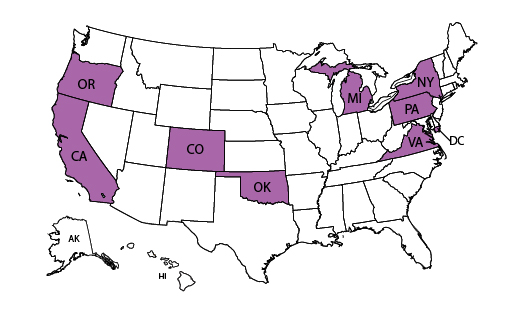In October 2003, the United States Post Office issued a "Stop the Violence Stamp" as directed by the Stamp Out Family Violence Act of 2001, to provide the public with a direct and tangible way to contribute funding for domestic violence programs. The proceeds from the stamp sales over a two-year period were transferred to the U.S. Department of Health and Human Services (HHS) to carry out the purposes of the Act with a focus on enhancing services to children and youth impacted by domestic violence.
In 2005, the Administration for Children and Families (ACF), a division of HHS, released funds for the development of demonstration projects to enhance services to children and youth who have been exposed to domestic violence. Three-year grants were awarded, after a competitive process, to projects in California, Colorado, Washington, D.C., Michigan, New York, Oklahoma, Oregon, Pennsylvania and Virginia to explore innovative approaches to intervention and prevention for families in both shelter and non-shelter settings. Across all programs, project staff and partners worked to:
- Develop and enhance assessment and intervention strategies for children and youth exposed to domestic violence and their parents;
- Train domestic violence program staff and community partners on the effects of being exposed to violence on children and youth and intervention strategies; and
- Develop or enhance community-based interventions specific to issues of domestic violence in order to meet the needs of children and youth impacted by such violence.

Each project described in the Guide that follows has contributed new knowledge and experience to helping children and youth exposed to domestic violence. This knowledge and experience has strengthened the relationship between domestic violence victim advocates and other partners in the community serving children and youth exposed to domestic violence. Further, each collaboration has reinforced the shared mission of protecting abused women and their children from violence by providing them with the interventions, tools and resources to move their lives and their futures forward in positive, productive and violence-free directions. This Guide showcases these projects, focusing on their goals, collaborative partnerships, experiences, challenges, and successes.
On average between 2001 and 2005, children were residents of the households experiencing intimate partner violence in 38% of the incidents involving female victims and 21% of the incidents involving male victims (Catalano, Smith, Snyder, & Rand, 2009).









